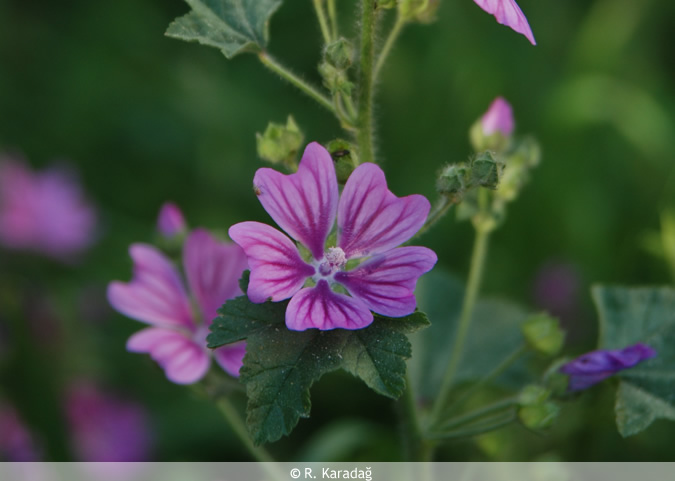Malva sylvestris is an annual (in Egypt and the Levant), biennial (in much of the Mediterranean region) or perennial herb widely distributed in the Palaeoarctic, from Western Europe to the Himalayas and Central Asia, perhaps to China, and naturalised in many of temperate regions.
Historical Data
According to the source cited above, the plant has quite a few medicinal properties, namely: All parts of the plant are antiphlogistic, astringent, demulcent, diuretic, emollient, expectorant, laxative and salve. The leaves and flowers can be eaten as part of the diet, or a kind of tea can be made from the leaves, flowers or roots.The leaves and flowers are the main part used, their demulcent properties making them valuable as a poultice for bruise, inflammations, insect bites, nettle stings, etc., or they can be taken internally in the treatment of respiratory system diseases and problems with the digestive tract. When combined with eucalyptus it makes a good remedy for coughs and other chest ailments. Mallow has similar properties, but is considered to be inferior to the marsh mallow (Althaea officinalis) and are seldom used internally. The plant is an excellent laxative for young children. The leaves can be used fresh whenever they are available or can be harvested in the spring and dried for later use. The flowers are harvested in the summer and can be dried for later use.

